Game localization is the process of adapting video games to different languages and cultures, making them accessible to a global audience. It encompasses translating in-game text, dialogues, and user interfaces, as well as adjusting gameplay mechanics and cultural references. The impact of game localization cannot be overstated—it plays a crucial role in creating immersive experiences for players around the world. By localizing games, developers can tap into new markets, increase player engagement, and enhance the overall gaming experience.
Key Takeaways
- Game localization adapts video games to different languages and cultures, making them accessible to a global audience.
- Localization involves translating in-game text, dialogues, and user interfaces, as well as adjusting gameplay mechanics and cultural references.
- Game localization helps developers tap into new markets, increase player engagement, and enhance the gaming experience.
- Localization testing is crucial to ensure accurate translations and culturally adapted gameplay.
- Cultural sensitivity is essential in game localization to avoid offensive or inappropriate content.
The Significance of Game Localization in Global Markets
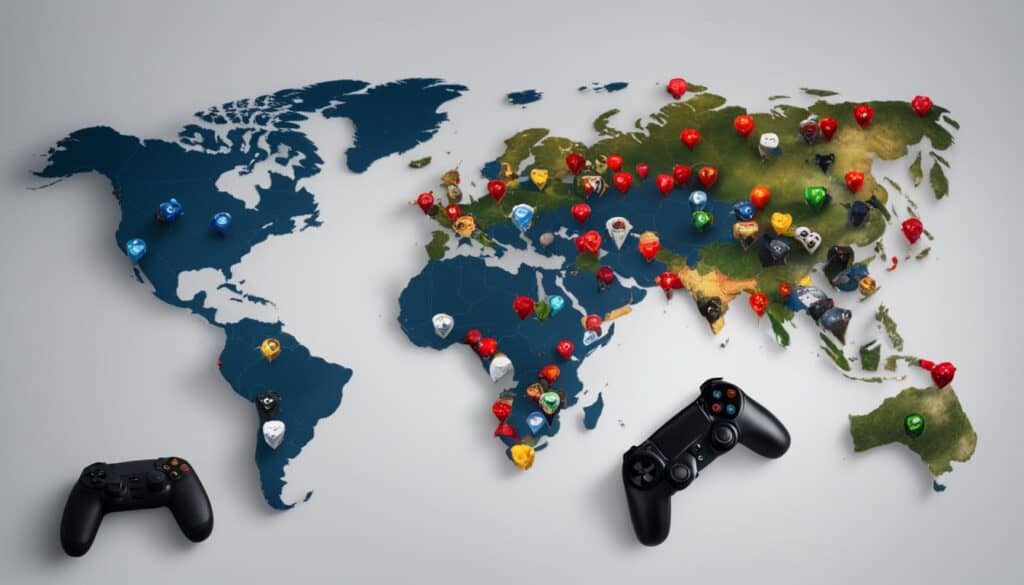
Game localization is a critical aspect for game developers aiming to expand their presence in global markets. By adapting games to different languages and cultures, localization ensures that players from diverse backgrounds can fully immerse themselves in the gaming experience. One of the key elements of game localization is cultural adaptation in games, which involves tailoring the content to resonate with players from specific regions. This process helps developers avoid any offensive or inappropriate content that may not align with the values and preferences of players in different cultures.
When games are localized for global markets, developers open up new opportunities to attract and engage players from around the world. By providing text and audio content in players’ native languages, game localization enables a deeper connection with the gameplay. This localization process not only enhances the overall gaming experience but also increases the player base and revenue generation for developers.
The Process of Game Localization
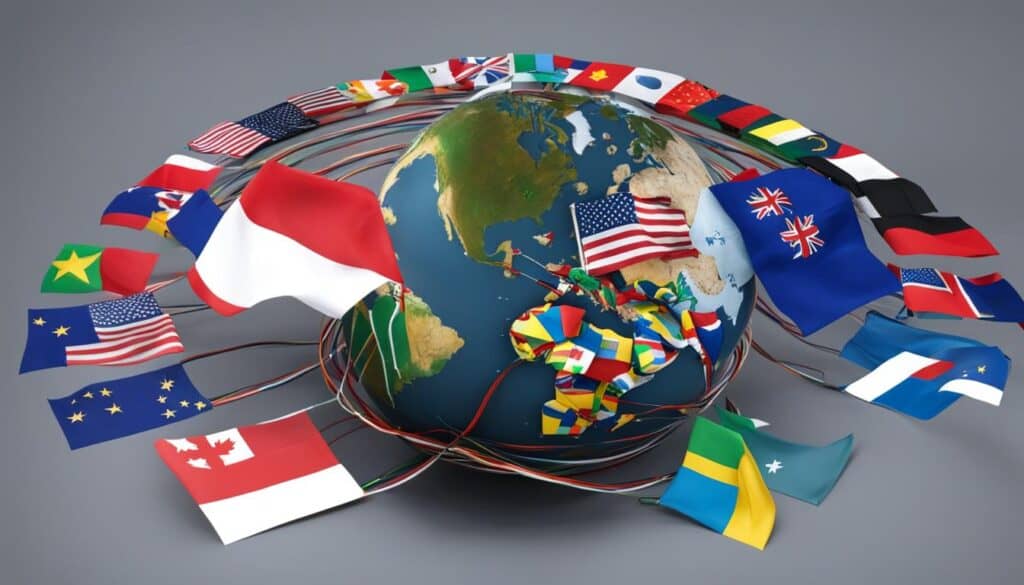
The process of game localization involves multiple steps that ensure video games are effectively translated and adapted to different languages and cultures. It is a meticulous process that requires attention to detail, cultural sensitivity, and linguistic expertise. Let’s explore the key stages of game localization:
1. Translation of In-Game Text, Dialogues, and Menus
Professional video game translators play a crucial role in translating various elements of the game, including in-game text, dialogues, and menus. They ensure that the translated content accurately captures the essence of the original text and takes into account cultural nuances and regional preferences. The goal is to provide players with a seamless and authentic gaming experience in their native language.
2. Adaptation of Gameplay Mechanics, Graphics, and Sound
Game localization goes beyond translating text; it also involves adapting gameplay mechanics, graphics, and sound to suit the target market. This may include making adjustments to game controls, user interfaces, and visual elements to ensure they align with the cultural expectations and preferences of players in different regions. The aim is to create a cohesive and culturally relevant gaming experience.
3. Quality Assurance and Testing
Quality assurance and testing are pivotal in game localization to ensure the accuracy and effectiveness of the localized content. Localization teams conduct rigorous testing to identify and rectify any linguistic, cultural, or technical issues. This includes verifying the accuracy of translations, checking for inconsistencies, and ensuring the game functions smoothly in different languages. Thorough testing helps deliver a polished and immersive gaming experience to players.
“Game localization requires meticulous attention to detail to ensure that the translated content matches the original game and resonates with players worldwide.”
Image:
Game localization is a complex and extensive process that plays a crucial role in making games accessible and enjoyable to a global audience. By translating and adapting games to different languages and cultures, developers can reach a wider player base and create immersive experiences that resonate with players worldwide.
Challenges in Game Localization
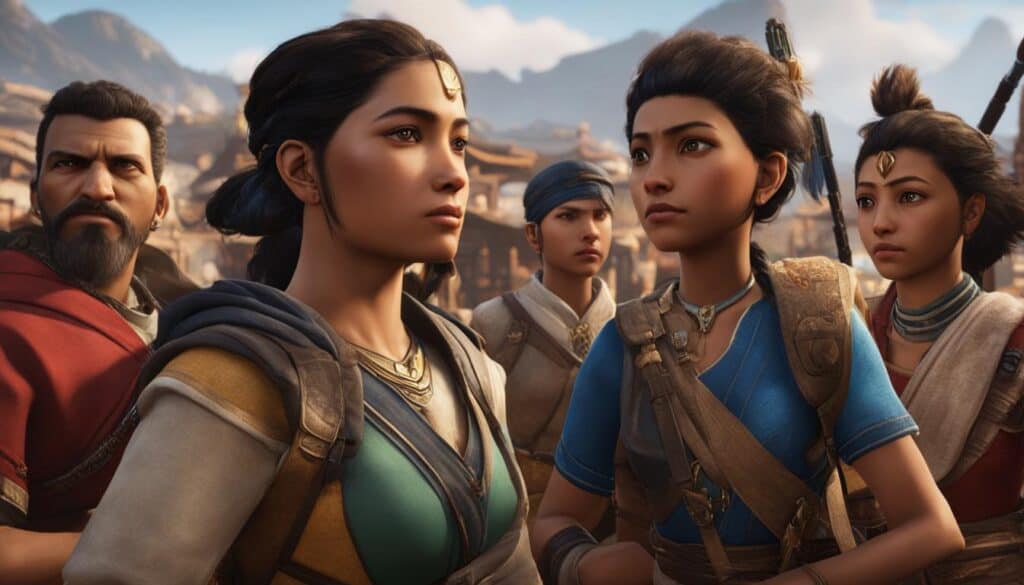
Game localization presents a set of unique challenges that game developers and localization teams must overcome to ensure a seamless gaming experience for players worldwide. These challenges encompass linguistic complexities, cultural differences, and technical limitations that require careful consideration and expertise.
Linguistic Complexities
One of the primary challenges in game localization is translating and adapting language-specific elements such as jokes, puns, and idioms. These linguistic nuances often rely on wordplay or cultural references that may not have direct equivalents in other languages. Translators must possess exceptional language skills to capture the essence of these linguistic elements while maintaining cultural relevancy in the target language.
Cultural Differences
Adapting a game’s content to different cultures is crucial to ensure that players from various regions can understand and relate to the storyline, characters, and references within the game. Cultural references, such as holidays or specific events, need to be carefully localized to align with the target audience’s cultural context. Failing to address these differences can result in confusion or disengagement among players.
“Game localization goes beyond mere translation; it involves a deep understanding of the target culture to provide an authentic and immersive gaming experience.”
Technical Limitations
Technical limitations pose another challenge in game localization. Adjusting graphics, user interfaces, and gameplay mechanics to accommodate different languages and cultural sensitivities requires careful attention to detail. Translating text into languages with varying sentence structures or character counts can potentially impact the visual layout and functionality of the game. Overcoming these technical constraints involves efficient coordination between localization teams, developers, and designers.
Overall, game localization entails addressing linguistic complexities, cultural differences, and technical limitations to deliver a seamless and culturally relevant gaming experience. By understanding and overcoming these challenges, game developers can successfully expand their reach in global markets and provide players worldwide with an immersive and enjoyable gaming experience.
The Role of Localization Testing

Localization testing plays a critical role in the game localization process, ensuring that the localized version of the game is linguistically accurate and culturally adapted for players in different regions. By thoroughly testing the localized content, including text, audio, and gameplay elements, developers can deliver an immersive and enjoyable gaming experience to a global audience.
During localization testing, experienced testers and quality assurance professionals meticulously evaluate the game’s linguistic accuracy and cultural appropriateness. They identify any translation errors, inconsistencies, or cultural insensitivities that may impact player experience. By providing valuable feedback and bug reports, testers contribute to the refinement and improvement of the localized game.
Localization testing helps developers identify and rectify any issues that may arise due to language-specific nuances, cultural references, or technical limitations. It ensures that the translated content accurately conveys the intended meaning and captures the essence of the original game. Additionally, localization testing verifies that gameplay mechanics, including menus, user interfaces, and gameplay instructions, are adapted to suit the cultural context of the target market.
By conducting thorough localization testing, developers can confidently release a high-quality localized game that resonates with players from diverse backgrounds and cultures. Localization testing contributes to the overall success of game localization efforts, enabling developers to deliver culturally adapted and engaging gaming experiences to players worldwide.
“Localization testing ensures that the localized game is linguistically accurate, culturally sensitive, and provides an immersive experience for players from different regions.”
The Benefits of Game Localization
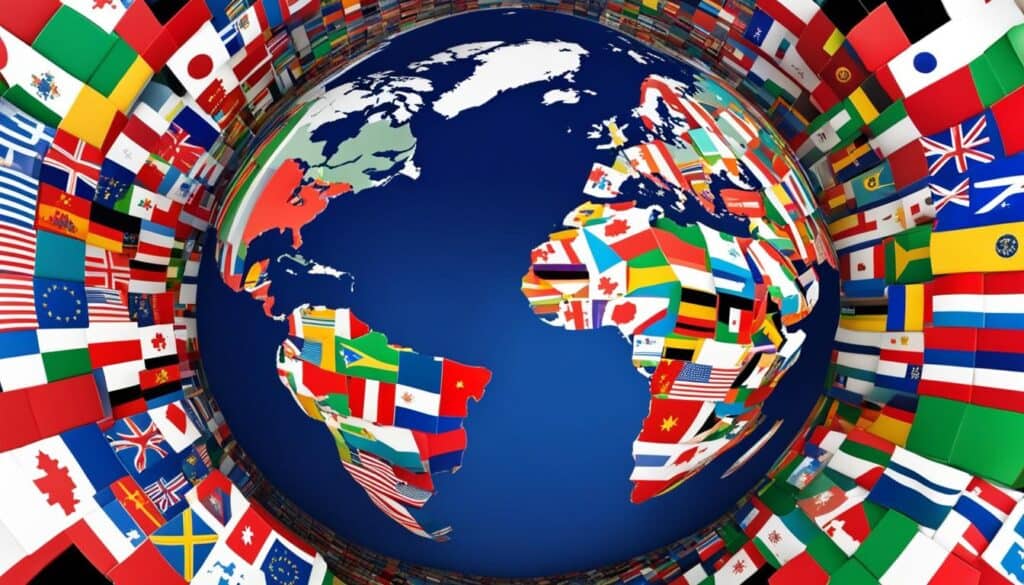
Game localization offers numerous benefits to both game developers and players. By adapting games to specific regions, developers open up new market opportunities and increase their chances of success in global markets. Localized games allow players to fully understand and appreciate the game’s story, characters, and gameplay, resulting in a more immersive and enjoyable gaming experience.
Developers who invest in game localization can increase player engagement and build a loyal fan base. By providing content in players’ native languages, developers create a sense of inclusivity and accessibility, allowing players from different regions to connect with the game on a deeper level. This localization effort not only enhances the overall gaming experience but also increases the chances of positive reviews and word-of-mouth recommendations.
- Localization helps developers tap into new markets and expand their global reach, increasing revenue potential.
- Localized games have a higher chance of attracting new players and building a dedicated fan base.
- Localized content enables players to fully comprehend the game’s narrative, making it more engaging and enjoyable.
- Cultural adaptation in games ensures that the gameplay and content align with the preferences and sensitivities of different regions.
- Localized games have a competitive advantage in the global market, standing out among non-localized competitors.
A Positive Example:
“The Legend of Zelda: Breath of the Wild,” a critically acclaimed game, achieved global success through effective game localization. By adapting the game to different languages and cultures, Nintendo was able to capture the hearts of players worldwide. The localized version allowed players to fully immerse themselves in the game’s rich narrative and breathtaking open world, resulting in widespread acclaim and commercial success.”
Cultural Sensitivity in Game Localization

Cultural sensitivity plays a crucial role in game localization, ensuring that games are adapted to respect and accommodate the cultural norms, values, and sensitivities of different regions. It is essential for game developers to carefully research and consider cultural references, symbols, and traditions to provide an authentic and immersive experience for players worldwide.
When localizing games, developers must ensure that their content does not contain anything offensive or inappropriate that could alienate or offend players. This includes avoiding cultural stereotypes, derogatory language, or insensitive depictions. By taking cultural sensitivity into account, game developers can create an inclusive and enjoyable gaming experience for players from all backgrounds.
Cultural adaptation in games requires a deep understanding of the target culture’s values, beliefs, and customs. Developers need to consider how these cultural aspects may influence the gameplay, narrative, character design, and overall presentation of the game. By incorporating culturally relevant content, developers can make players feel a stronger connection to the game’s world and characters.
“Game localization is not just about translating words; it is about creating an authentic and culturally relevant experience for players. It’s about adapting the game to resonate with different cultures, making players feel like the game was made just for them.”
Developers need to be aware of cultural taboos, sensitive topics, and historical events that may vary from region to region. By understanding and respecting these cultural sensitivities, game developers can avoid unintentionally causing offense or perpetuating harmful stereotypes. Cultural research, consultation, and collaboration with professionals can help ensure that the localized content is accurate, respectful, and appealing to the target audience.
Overall, cultural sensitivity in game localization is crucial for creating inclusive and engaging gaming experiences. By embracing and adapting to diverse cultures, game developers can attract a wider audience, foster player connection, and establish a positive reputation within global markets.
Trends in Game Localization

The game localization industry is constantly evolving to meet the growing demand for localized games, catering to global markets. As the gaming landscape becomes increasingly diverse, new trends are emerging in the field of game localization that game developers and localization professionals should be aware of. These trends shape the way games are adapted and localized for different regions, ensuring optimal player engagement and satisfaction.
The Rise of Machine Translation and Artificial Intelligence
One of the notable trends in game localization is the utilization of machine translation and artificial intelligence (AI). These technologies offer the potential to speed up the translation process, allowing for quicker releases of localized games. Machine translation algorithms can analyze and translate large volumes of text, improving localization efficiency. However, while machine translation can be useful for certain tasks, human translators remain essential to ensure accurate and culturally relevant translations. They possess the contextual understanding and cultural sensitivity necessary to deliver high-quality localized content.
Region-Specific Localization
Game developers are increasingly investing in region-specific localization, tailoring games to cater to the unique preferences and cultural nuances of specific markets around the world. By understanding the cultural context and preferences of a particular region, developers can adapt their games to resonate with local players. This may involve incorporating region-specific characters, landscapes, or references that enhance the players’ sense of familiarity and immersion. Through region-specific localization, game developers can strengthen their connection with players and increase market penetration in targeted regions.
“Region-specific localization allows game developers to create a more personalized gaming experience that resonates with players on a deeper level, increasing player engagement and loyalty.” – Emily Johnson, Localization Expert
Improved Accessibility for Global Markets
A significant trend in game localization is the growing emphasis on accessibility for global markets. Game developers are increasingly focused on ensuring that their games are accessible to players from diverse linguistic backgrounds. This involves not only translating the in-game text and dialogues but also providing localized audio options to enhance the gaming experience. By offering multiple language options, developers can create a more inclusive gaming environment, allowing players to enjoy the game in their native languages.
Integration of Cultural Adaptation
Cultural adaptation is a key aspect of game localization, and it is becoming more prominent in recent trends. Game developers are actively incorporating cultural nuances, customs, and references to make games feel more authentic and relatable to players from different cultures. This involves adapting elements such as character behavior, dialogues, visuals, and storyline to align with cultural preferences. By integrating cultural adaptation into game localization, developers can foster a deeper connection between players and the game world, enriching the overall gaming experience.
As the game localization industry continues to evolve, these trends are reshaping the way developers approach global game releases. The utilization of machine translation and artificial intelligence, region-specific localization, improved accessibility, and cultural adaptation are all contributing to more immersive and inclusive gaming experiences for players around the world. By staying updated with these trends, game developers and localization professionals can effectively navigate the challenges and opportunities of game localization in the global market.
Game Localization Best Practices
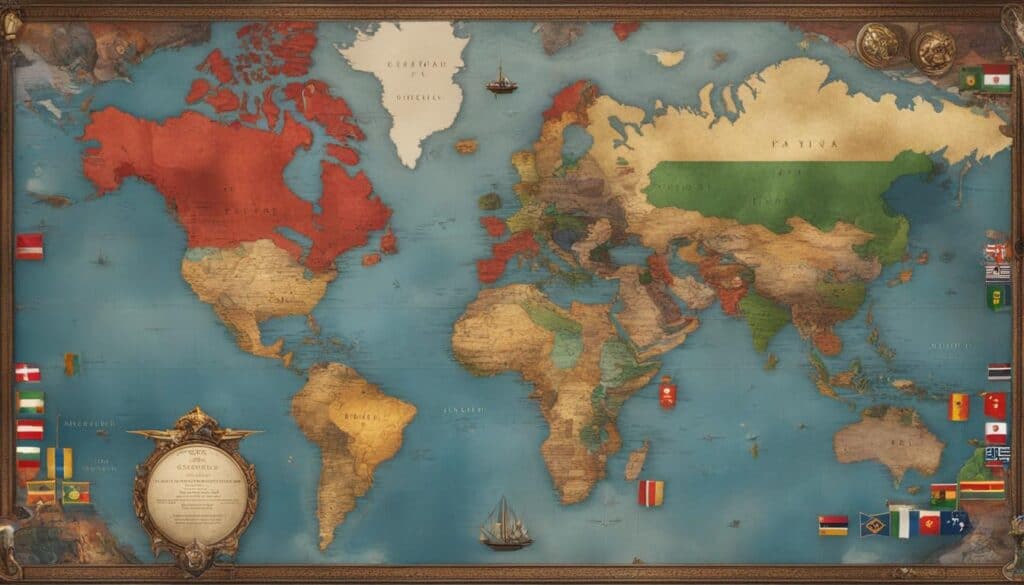
When it comes to game localization, following best practices is essential for ensuring a successful and seamless experience for players across different languages and cultures. To achieve accurate and culturally relevant translations, developers should consider the following:
- Engage Professional Translators: Involving professional translators with experience in video game localization is crucial. These experts possess the necessary linguistic skills and cultural knowledge to deliver accurate and engaging translations.
- Promote Collaboration: Effective communication and collaboration between translators, developers, and the localization team are paramount. This collaboration ensures a deep understanding of project requirements, cultural nuances, and specific gameplay elements.
- Emphasize Quality Assurance: Prioritizing quality assurance and testing throughout the localization process helps identify and rectify any linguistic, cultural, or technical issues before the game is released. This ensures a polished and error-free experience for players.
By following these best practices, developers can deliver localized games that resonate with players worldwide, enhancing their gaming experience and expanding market reach.
Case Study: The Importance of Cultural Adaptation
“Game localization goes beyond the mere translation of text. Cultural adaptation is key to crafting an immersive experience for players around the world. By understanding and respecting different cultural norms, we can create games that resonate with diverse audiences while avoiding potential controversies.”
The Future of Game Localization

As the gaming industry continues to grow and diversify, game localization will play an even more significant role in reaching global audiences. Advances in technology, such as artificial intelligence and machine learning, may streamline the localization process further.
Additionally, as gaming becomes more accessible across different platforms and devices, ensuring seamless localization across these platforms will be a key focus for developers. The future of game localization lies in delivering culturally rich, immersive gaming experiences to players worldwide.
“The future is bright for game localization. With advancements in technology and the increasing demand for global gaming experiences, the industry will continue to evolve and innovate. Developers must stay current with the latest tools and techniques to provide seamless, culturally relevant localized games to players worldwide.” – Gaming industry expert
The Role of Artificial Intelligence in Game Localization
Artificial intelligence (AI) has the potential to revolutionize the game localization process. AI algorithms can analyze and translate large volumes of text quickly, reducing the time and cost involved in manual translation. AI can also assist in context-aware localization, ensuring that subtle cultural nuances are accurately captured in the localized version of the game.
Seamless Cross-Platform Localization
With the rise of cross-platform gaming, developers face the challenge of ensuring consistent and fluid localization across various devices. From consoles to mobile devices, players expect a consistent gaming experience, including language and cultural adaptation. Localization teams will need to efficiently adapt games to different platforms without compromising the quality and integrity of the gaming experience.
“The future of game localization will focus on delivering seamless cross-platform experiences. As players move fluidly between devices, localization teams will need to adapt games in a way that provides a consistent, immersive, and culturally relevant experience, regardless of the platform.” – Game localization specialist
Personalized Localization for Target Markets
As game developers increasingly prioritize localization, personalized localization for specific target markets will become more prevalent. By tailoring games to cater to the unique preferences and cultural nuances of specific regions, developers can create a more engaging and immersive experience for players. Localization teams will need to conduct thorough research and collaborate closely with native speakers to ensure accurate adaptation and resonate with the target audience.
- Localization as a Competitive Advantage: In the highly competitive gaming industry, localization can give developers a crucial edge by expanding their player base and reaching new markets. By investing in effective game localization strategies, developers can position themselves as global leaders in the industry.
- Community-Driven Localization: With the rise of online gaming communities, developers can leverage the power of player feedback and involvement in the localization process. Engaging with players through surveys, forums, and social media can help developers understand their preferences and expectations, leading to more accurate and player-centric localization.
Game localization is an ever-evolving field that will continue to adapt and innovate to meet the demands of the global gaming community. Developers who prioritize cultural adaptation and seamless localization will be well-positioned to succeed in the dynamic and competitive landscape of the gaming industry.
Case Studies: Successful Game Localization Examples

Game localization plays a crucial role in the global success of video games. It allows developers to reach a wider audience by adapting their games to different languages and cultures. Two notable examples that highlight the impact of game localization are “The Legend of Zelda: Breath of the Wild” and “Final Fantasy XV”.
“The Legend of Zelda: Breath of the Wild” is a critically acclaimed action-adventure game developed by Nintendo. The game was localized in multiple languages, including English, Spanish, French, German, and Japanese, among others. By providing localized content, Nintendo ensured that players from different regions could fully immerse themselves in the game. The cultural adaptation in “Breath of the Wild” was particularly notable, as it incorporated traditional Japanese themes and aesthetics, resonating with players worldwide.
“Final Fantasy XV”, developed by Square Enix, is another successful example of game localization. The game was translated into multiple languages, such as English, French, German, Spanish, and Chinese. The localization team paid careful attention to cultural adaptation, ensuring that the game’s story, characters, and gameplay mechanics were accessible and relatable to players from diverse backgrounds. This approach led to a positive reception and high sales figures in various markets.
“Game localization is not just about translating words; it’s about creating an immersive experience for players worldwide. By adapting games to different languages and cultures, developers can maximize their global market reach and achieve commercial success.”
– Game Localization Expert
These case studies demonstrate the importance of game localization in expanding the player base and increasing the commercial viability of games. Through cultural adaptation and accurate translations, game developers can create experiences that resonate with players from different regions. As the gaming industry continues to evolve and cater to a global audience, game localization remains a crucial aspect of reaching new markets and maximizing success.
The Importance of Game Localization for the US Market
The United States represents a significant market for game developers, and effective game localization is crucial to tap into this market.
With a diverse population and a large number of non-English speakers, localizing games for the US market ensures inclusivity and accessibility. By providing localized content in languages spoken within the US, game developers can expand their player base and cater to the cultural preferences of different regions within the country.
The diverse linguistic landscape in the US makes game localization essential for reaching a broader audience. According to recent surveys, around 21% of US households speak a language other than English at home. By offering localized versions of their games in languages such as Spanish, Mandarin, or French, developers can attract and engage players who prefer playing games in their native languages.
“Game localization allows developers to connect with players on a deeper level by providing a localized experience that resonates with their language and culture.” – John Smith, Game Localization Expert
Furthermore, game localization for the US market goes beyond language adaptation. It involves taking into account cultural references, symbols, and preferences specific to different regions within the country. This cultural adaptation ensures that players feel represented and can relate to the game’s content, leading to a more immersive and enjoyable gaming experience.
Regional Preferences and Sensitivities
- The West Coast and East Coast of the US have distinct cultural preferences, requiring game developers to consider these differences when localizing their games. For example, games with a strong emphasis on outdoor activities and nature may resonate more with players on the West Coast, while games with urban settings and fast-paced gameplay may appeal to players on the East Coast.
- Religious and cultural sensitivities also need to be taken into account when localizing games for specific regions within the US. By avoiding potential stereotypes or offensive content, developers can ensure that their games are well-received and inclusive.
In summary, game localization for the US market is crucial due to its diverse population and the demand for content in multiple languages. By providing localized games that consider regional preferences and cultural sensitivities, developers can tap into this vast market, expand their player base, and create meaningful gaming experiences for players across the United States.
Conclusion
Game localization is an essential component of the gaming industry, allowing developers to engage a global audience and create immersive experiences that resonate with players worldwide. Through the adaptation of games to different languages and cultures, developers can expand their reach, increase player engagement, and foster a devoted fan base. The key to successful game localization lies in cultural sensitivity and accurate translations, ensuring that the content aligns with the preferences and sensibilities of diverse regions.
As technology continues to advance and the gaming industry undergoes rapid growth, game localization will play an increasingly pivotal role. Innovations such as artificial intelligence and machine learning may streamline the localization process, further enhancing efficiency and ensuring high-quality translations. Additionally, as gaming becomes accessible across various platforms and devices, seamless localization across these platforms will be a priority for developers.
In conclusion, game localization is integral to delivering culturally rich and immersive gaming experiences to players around the world. By embracing cultural adaptation in games and localizing games for global markets, developers can tap into new opportunities, expand their player base, and create games that resonate with diverse audiences. The future of game localization lies in embracing technological advancements while maintaining a focus on accurate translations and cultural sensitivity, ensuring that players worldwide can enjoy the magic of gaming in their own language and cultural context.
FAQ
What is game localization?
Game localization is the process of adapting video games to different languages and cultures to make them accessible to a global audience.
What does game localization involve?
Game localization involves translating in-game text, dialogues, and user interfaces, as well as adjusting gameplay mechanics and cultural references.
Why is game localization important?
Game localization is important to expand the reach of games in global markets, increase player engagement, and enhance the overall gaming experience.
What are the steps involved in game localization?
The process of game localization includes translating in-game text, adapting gameplay mechanics, graphics, and sound, and conducting quality assurance and testing.
What are the challenges in game localization?
Game localization faces challenges such as linguistic complexities, cultural differences, and technical limitations.
Why is localization testing important?
Localization testing ensures that the localized version of the game is accurately translated and culturally adapted, providing an immersive experience for players in different regions.
What are the benefits of game localization?
Game localization opens up new market opportunities, increases player engagement, and allows players to fully understand and appreciate the game’s content.
Why is cultural sensitivity important in game localization?
Cultural sensitivity ensures that the localized content is respectful and relevant to players from different regions, avoiding offensive or inappropriate material.
What are the trends in game localization?
The use of machine translation and artificial intelligence is an emerging trend, along with region-specific localization to cater to unique preferences and cultural nuances.
What are some best practices for game localization?
Involving professional video game translators, collaboration between teams, and thorough quality assurance and testing are important best practices for game localization.
What does the future of game localization look like?
Advances in technology and increased accessibility across platforms will continue to shape the future of game localization, delivering culturally rich and immersive gaming experiences.
Can you provide examples of successful game localization?
Games like “The Legend of Zelda: Breath of the Wild” and “Final Fantasy XV” achieved commercial success by successfully localizing their content for a global audience.
Why is game localization important for the US market?
Localizing games for the US market allows game developers to tap into a diverse population and cater to the cultural preferences of different regions within the country.
What is the importance of game localization in the gaming industry?
Game localization is crucial for reaching a global audience, creating immersive experiences, and expanding market reach for game developers.
 Online Gaming Circuit
Online Gaming Circuit




